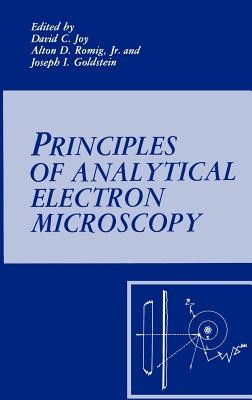
- We will send in 10–14 business days.
- Publisher: Springer
- ISBN-10: 0306423871
- ISBN-13: 9780306423871
- Format: 15.6 x 23.4 x 2.7 cm, hardcover
- Language: English
- SAVE -10% with code: EXTRA
Principles of Analytical Electron Microscopy (e-book) (used book) | bookbook.eu
Reviews
Description
Since the publication in 1979 of Introduction to Analytical Electron Microscopy (ed. J. J. Hren, J. I. Goldstein, and D. C. Joy; Plenum Press), analytical electron microscopy has continued to evolve and mature both as a topic for fundamental scientific investigation and as a tool for inorganic and organic materials characterization. Significant strides have been made in our understanding of image formation, electron diffraction, and beam/specimen interactions, both in terms of the physics of the processes and their practical implementation in modern instruments. It is the intent of the editors and authors of the current text, Principles of Analytical Electron Microscopy, to bring together, in one concise and readily accessible volume, these recent advances in the subject. The text begins with a thorough discussion of fundamentals to lay a foundation for today's state-of-the-art microscopy. All currently important areas in analytical electron microscopy-including electron optics, electron beam/specimen interactions, image formation, x-ray microanalysis, energy-loss spectroscopy, electron diffraction and specimen effects-have been given thorough attention. To increase the utility of the volume to a broader cross section of the scientific community, the book's approach is, in general, more descriptive than mathematical. In some areas, however, mathematical concepts are dealt with in depth, increasing the appeal to those seeking a more rigorous treatment of the subject.
EXTRA 10 % discount with code: EXTRA
The promotion ends in 10d.14:01:58
The discount code is valid when purchasing from 10 €. Discounts do not stack.
- Publisher: Springer
- ISBN-10: 0306423871
- ISBN-13: 9780306423871
- Format: 15.6 x 23.4 x 2.7 cm, hardcover
- Language: English English
Since the publication in 1979 of Introduction to Analytical Electron Microscopy (ed. J. J. Hren, J. I. Goldstein, and D. C. Joy; Plenum Press), analytical electron microscopy has continued to evolve and mature both as a topic for fundamental scientific investigation and as a tool for inorganic and organic materials characterization. Significant strides have been made in our understanding of image formation, electron diffraction, and beam/specimen interactions, both in terms of the physics of the processes and their practical implementation in modern instruments. It is the intent of the editors and authors of the current text, Principles of Analytical Electron Microscopy, to bring together, in one concise and readily accessible volume, these recent advances in the subject. The text begins with a thorough discussion of fundamentals to lay a foundation for today's state-of-the-art microscopy. All currently important areas in analytical electron microscopy-including electron optics, electron beam/specimen interactions, image formation, x-ray microanalysis, energy-loss spectroscopy, electron diffraction and specimen effects-have been given thorough attention. To increase the utility of the volume to a broader cross section of the scientific community, the book's approach is, in general, more descriptive than mathematical. In some areas, however, mathematical concepts are dealt with in depth, increasing the appeal to those seeking a more rigorous treatment of the subject.


Reviews